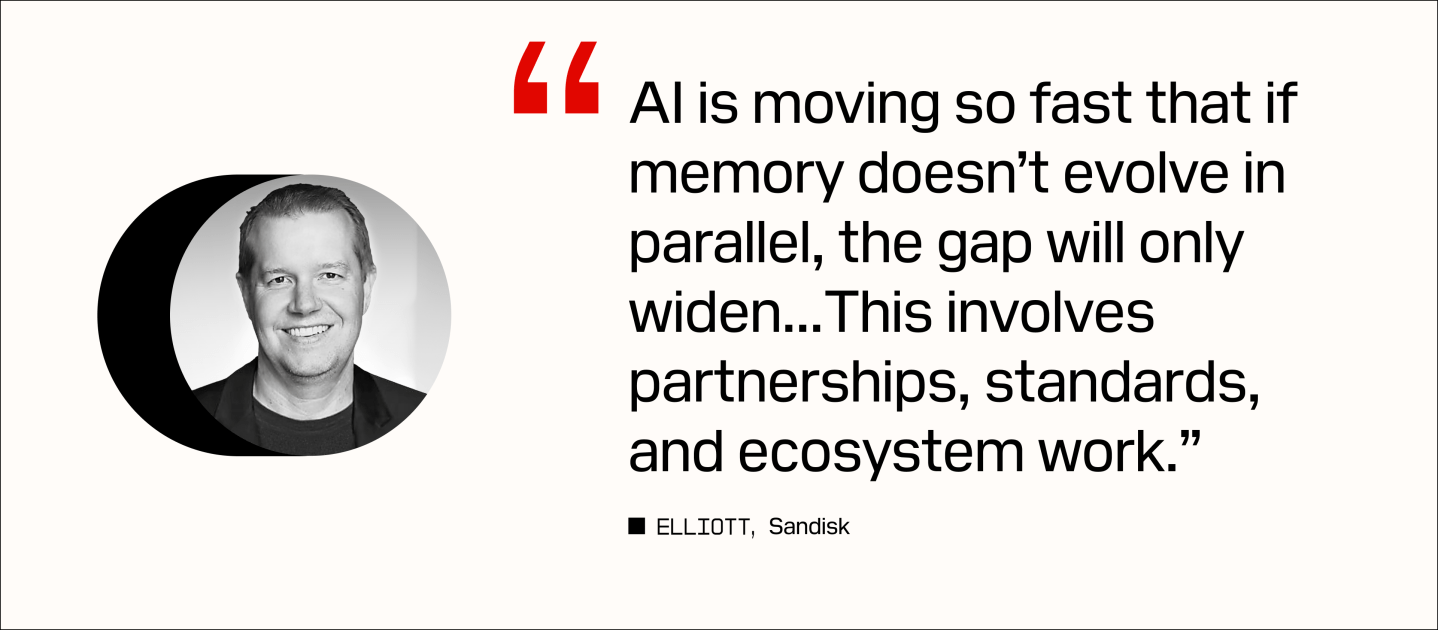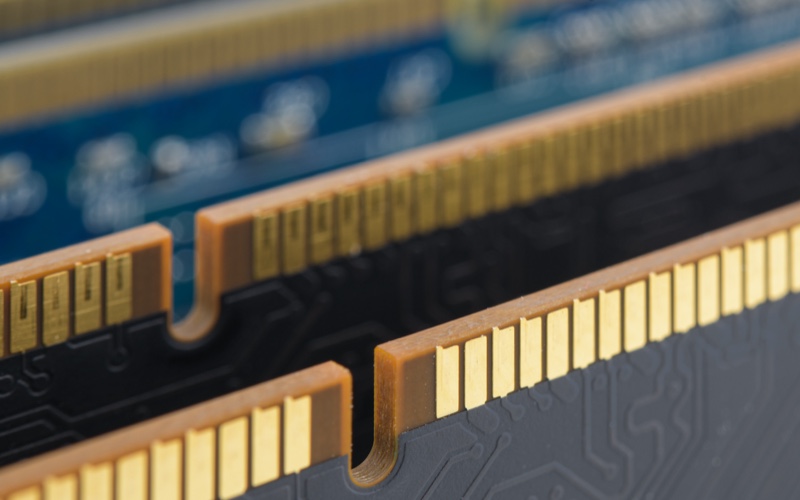The “memory wall” challenge is limiting AI’s growth. Sandisk is responding with a new memory architecture designed to remove constraints and scale more efficiently.
In recent decades, major tech breakthroughs—the internet, social media, smartphones—have steadily reshaped how people live and work. Each transformed the world gradually, giving people time to adapt. AI is different. With access to new tools, adoption has exploded, with one popular AI chatbot reaching 100 million users in just two months after launch, while a popular global media platform for filtering and sharing photos and videos took 2.5 years to reach the same scale.
This rapid uptake reflects AI’s immense power to revolutionize learning, work, creativity, and communication. From automating workflows to generating media on demand, AI is changing everything—but such rapid evolution brings serious infrastructure challenges, especially in memory and storage.
Dynamic random-access memory (DRAM) scaling—both in terms of capacity and cost per bit—has slowed dramatically in recent years. This stagnation creates a growing mismatch between what AI workloads demand and what traditional memory technologies, such as DRAM, can supply. Compounding the issue, U.S. power supply growth is falling behind AI’s needs, with AI data center energy demand alone expected to rise more than 30-fold by 2035.
Yet, NAND flash continues to scale more aggressively, offering a clear path forward. Building off its architecture, Sandisk’s High Bandwidth Flash (HBF™) aims to meet the moment—unlocking new efficiencies and enabling AI to scale sustainably.
Fortune Brand Studio sat down with Sandisk executives Alper Ilkbahar, chief technology officer, and Jim Elliott, chief revenue officer, to discuss how memory-centric innovation will remove key bottlenecks and help define AI’s next chapter.
Alper Ilkbahar: System design has always been about balancing compute, memory bandwidth, and capacity. That worked for a long time. But AI models have exploded in size. And every time you generate a token—a common sequence of characters found in a set of text—the entire model must be pulled from memory into the processor, and that pushes memory systems to their limits.
From a business perspective, what does that memory wall mean?
Jim Elliott: It shows up in cost and power. U.S. data center power demand is projected to grow fivefold overall—and 30-fold for AI—over the next decade. Energy supply isn’t growing at the same rate.
If you need dozens of processors just to hold a model in memory, you’re not just buying chips. You’re covering the cost for cooling, maintenance, floor space, and so on. Scalability can become a challenge. As a result, the memory wall is not only a technical problem—it’s also an economic one.
Memory-centric AI will be key to moving forward. What does the shift to this model involve?
Ilkbahar: For years, the default strategy was compute-centric—keep adding more processing power to get around memory limits. A memory-centric approach flips that. It starts by giving systems the memory they need so we don’t have to keep overbuilding compute.
It’s like how the brain works: You don’t light up the entire brain to answer a question; you just access what’s relevant. Memory-centric AI is about smarter access, lower energy use, and better scaling.

How does HBF sit at the center of that shift?
Ilkbahar: Sandisk’s new HBF technology is NAND reimagined for breakthrough capacity and performance. HBF’s NAND-based architecture offers up to eight times to 16 times the capacity of HBM while delivering similar bandwidth at a similar cost. And because it’s nonvolatile, it doesn’t lose data when powered off. That changes the economics and scalability of AI infrastructure—we can break through the capacity barrier without endlessly adding more hardware.
Does moving to a memory-centric model change the cost equation?
Elliott: Yes. The cost challenge with AI infrastructure today isn’t just the price of silicon—it’s everything that comes with it. When you have to deploy tens or even hundreds of GPUs (graphics processing units) just to hold a model in memory, you’re also paying for power and for real estate. That’s what makes the current model so expensive to scale.
NAND, also known as Flash, is simply a more economical memory technology. The cost per bit is lower than DRAM or HBM. If you can get more memory at lower cost, and use fewer processors overall, you can scale AI far more efficiently.
How does this memory-focused approach translate to the types of applications people will actually use?
Elliott: The next wave isn’t just text—it’s image, and especially video. Text-to-video will generate enormous volumes of data. Billions of people will be creating and storing AI-generated content.
And what’s becoming known across the industry as “persistent memory” is dramatically changing the overall AI experience. AI chatbots are increasingly able to recall past sessions and weave previous answers together for a more personalized response. Persistence means AI won’t just respond in the moment; it’s beginning to remember context, tone, and history, providing a richer interactive experience.
Energy is a big part of this story. How does memory innovation help?
Elliott: Every watt saved in memory and storage can be redeployed elsewhere in the system. NAND flash is inherently more power-efficient, so you get more capacity in a smaller footprint with less energy use.
Ilkbahar: With a memory-centric architecture, you can reduce the number of processors and data movement. That brings the power curve down. If AI is going to scale sustainably, this must be part of the answer.
What needs to happen across the industry to make a memory-centric approach a reality?
Elliott: This isn’t something any one company can do alone. What we’re talking about is re-architecting how infrastructure is built, and that requires broad industry alignment. AI is moving so fast that if memory doesn’t evolve in parallel, the gap will only widen. So yes, this involves partnerships, standards, and ecosystem work.

Ilkbahar: Exactly. Memory-centric design changes the way processors, accelerators, and software stacks are built. That’s why we’re working closely with partners to make sure an open ecosystem with interoperable industry specifications is in place for HBF.
